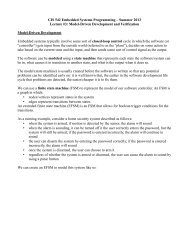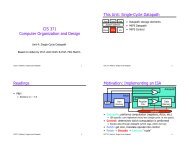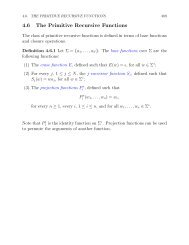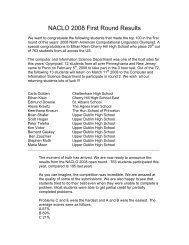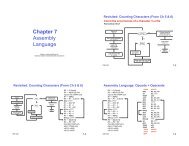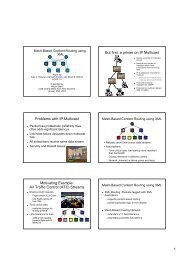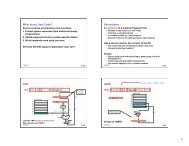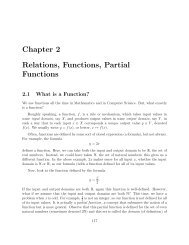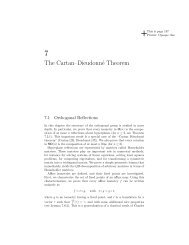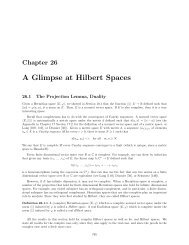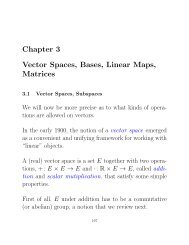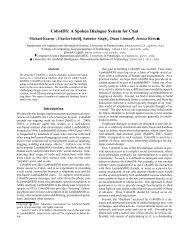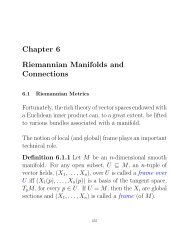Chapter 3 Context-Free Grammars, Context-Free Languages, Parse ...
Chapter 3 Context-Free Grammars, Context-Free Languages, Parse ...
Chapter 3 Context-Free Grammars, Context-Free Languages, Parse ...
You also want an ePaper? Increase the reach of your titles
YUMPU automatically turns print PDFs into web optimized ePapers that Google loves.
64 CHAPTER 3. CONTEXT-FREE GRAMMARS AND LANGUAGES<br />
Given a finite tree t, theyield of t is the string<br />
t(u1)t(u2) ···t(uk),<br />
where u1,u2,...,uk is the sequence of leaves of t in lexicographic order.<br />
For example, the yield of the tree below is aaab:<br />
f<br />
↙ ↘<br />
h g<br />
↙ ↙ ↘<br />
a a f<br />
↙ ↘<br />
h b<br />
↓<br />
a<br />
Given a finite tree t, thedepth of t is the integer<br />
d(t) =max{|u| |u ∈ dom(t)}.<br />
Given a tree t and a node u in dom(t), the subtree rooted at u is the tree t/u, whose<br />
domain is the set<br />
{v | uv ∈ dom(t)}<br />
andsuchthatt/u(v) =t(uv) for all v in dom(t/u).<br />
Another important operation is the operation of tree replacement (or tree substitution).<br />
Definition 3.10.3 Given two trees t1 and t2 and a tree address u in t1, theresult of substituting<br />
t2 at u in t1, denoted by t1[u ← t2], is the function whose graph is the set of<br />
pairs<br />
{(v, t1(v)) | v ∈ dom(t1), uis not a prefix of v}∪{(uv, t2(v)) | v ∈ dom(t2)}.<br />
Let t1 and t2 be the trees defined by the following diagrams:<br />
Tree t1<br />
f<br />
↙ ↘<br />
h g<br />
↙ ↙ ↘<br />
a a f<br />
↙ ↘<br />
h b<br />
↓<br />
a



